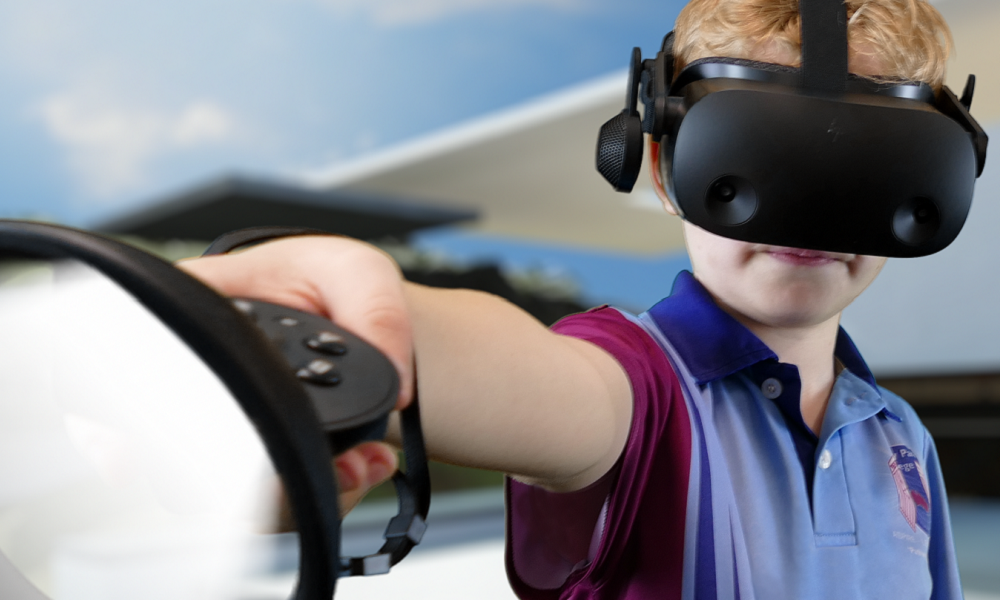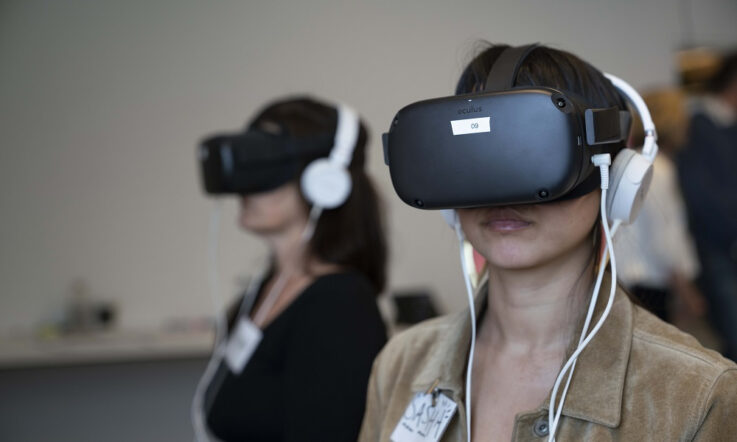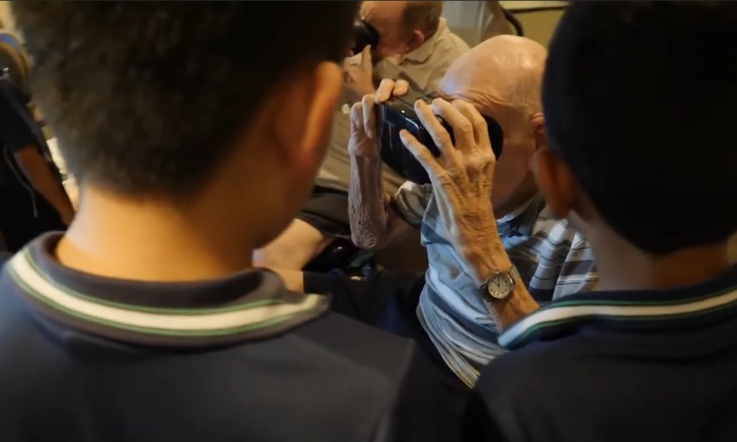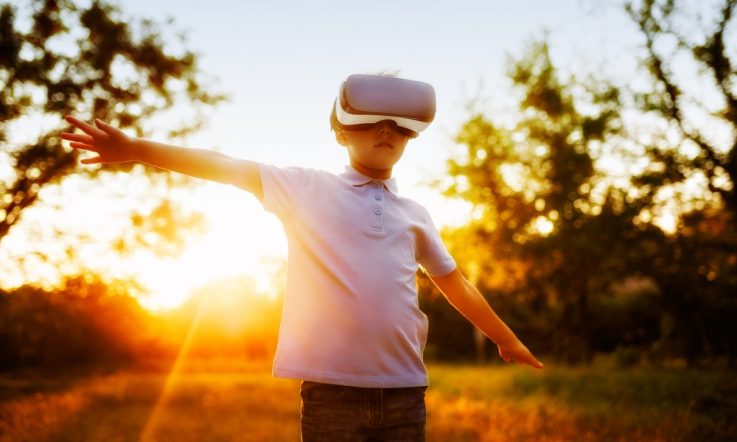Virtual reality is an immersive tool that allows students to engage in learning in new and exciting ways. In the first article in a three-part series on virtual reality in education, Curriculum Designer Dr Susan O’Donnell and Project Manager Adrian Rayner at VR Learning & Design Hub, Cairns Southern Corridor, explain how virtual reality has been used in many industries and commercial products over decades, why using it comes so naturally to 21st Century learners, and why virtual reality represents exciting learning possibilities for students and teachers alike.
It would be fair to say that since 2020, the word ‘virtual’ has been attached to a multitude of activities and events. We’ve attended virtual conferences, listened to virtual choirs, cheered our teams in virtual sports, discussed important matters with colleagues at virtual meetings and even enjoyed virtual visits with friends and family. Virtual reality (VR) also represents exciting possibilities for students and teachers alike.
So, what is it?
VR is the creation of a simulated environment which might be artificial or have the capacity to simulate ‘the real world, current or past, to allow the user the ability to view and experience an environment that is not the present reality ... This advanced form of communication has the goal to create as real of an experience for the user as possible’ (Ladendorf et al., 2018).
This is achieved using a head-mounted display (HMD) such as a headset or goggles, placed over the eyes of the user to display a computer-generated 3D environment. The user’s brain is ‘tricked’ into believing the reality of what can be seen, heard and possibly felt and the body responds as if this environment is real.
Is this new, or just newly discovered?
You could be mistaken into thinking that the current ‘buzz’ about all things virtual is a new technology. In fact, VR has been around for decades, albeit at various stages of technological development and with various levels of success.
For example, in the mid-1960s VR technology was used in the development of flight simulator training for the US Air Force. In the 1990s however, the entertainment industry saw its potential and used VR technology for new customer experiences in the game and film business. Currently, the use of VR has expanded to include a wide range of industries, the military, induction training, sports, engineering, architecture, medicine, education and more.
VR has been around for so long, including in education, but it simply has not been fully embraced as an effective learning and teaching tool in schools. It has been argued that this is a result of myriad limitations to both the technologies themselves, and the costs and logistics required to deploy them (Kavanagh et al., 2017).
Why is VR so popular in education now?
In spite of the past limitations of VR – such as being difficult to operate, expensive to set up and power in today’s world – it is now readily available (Hu-Au & Lee, 2017).
Our educational world has changed too. Just think of the number of students at secondary schools who own and operate a smartphone. Imagine too the sheer scale of their usage and how it serves their lives as young people in today’s global landscape.
They might struggle with basic maths and literacy, but watch them navigate their technological culture with the confidence of skilled literate technological natives. Educators are realising that VR may represent a challenge for some adults, including teachers, but it is the natural element for students. It just makes sense to harness the special characteristics of VR to enhance and enrich the learning of students in the context of the Australian Curriculum.
Not the only tool in the box
The use of VR for learning and teaching does not preclude that all other educational tools should or could be discarded. There is still a place in the classroom for textbooks, videos, PowerPoint and, yes, whiteboards and pens. VR can’t do everything – but what it does do cannot be done by those other familiar tools.
Providing a multi-sensory experience, VR has its own unique features, which may range from the passivity of a 360-degree video to the active rich experience provided by user-directed, emotionally-connected immersive technology. The latter allows the user to enter into an environment where they have the ability to interact with and respond to objects, visual stimuli, sound effects, facts and puzzles to be solved. This quote succinctly captures the special ‘magic’ of VR:
We can see, hear, and touch virtual objects. We can create, modify, and manipulate them in much the same way we do physical objects, but without those pesky real-world limitations. VR is not only virtual; we can meet real people in virtual worlds, we can tele-exist in real places all over the world and beyond, and we can superimpose virtual displays onto the physical world (Bricken, 1991).
Our students can interact with objects in VR and manipulate them at will. They can feel a sense of empathy by experiencing another’s reality or exploring the inaccessible mysteries of the science, historical or mathematical world, to name just a few. They can fully use their imaginations and creativity without being hindered by physical limitations.
VR can take our students to impossible places such as the surface of the Sun, or inaccessible destinations such as the Great Wall of China.
Fully immersive VR technology creates a multi-sensory experience where the user is autonomous, actively engaged, free to move and manipulate their surroundings. There is a sense of being really there, fully present in a simulated reality whilst being firmly grounded in the real world.
How can we deny our students these wonderful opportunities for rich, in-depth, transformative learning?
Stay tuned: The next article from Dr Susan O’Donnell and Adrian Rayner will discuss the essential elements of a successful Virtual Reality Program in Education.
References
Bricken, M. (1991). Virtual reality learning environments: potentials and challenges. ACM SIGGRAPH Computer Graphics, 25(3), 178-184. https://doi.org/10.1145/126640.126657
Hu-Au, E., & Lee, J. J. (2017). Virtual reality in education: a tool for learning in the experience age. International Journal of Innovation in Education, 4(4), 215-226. https://doi.org/10.1504/IJIIE.2017.091481
Kavanagh, S., Luxton-Reilly, A., Wuensche, B., & Plimmer, B. (2017). A systematic review of Virtual Reality in education. Themes in Science and Technology Education, 10(2), 85-119. https://www.learntechlib.org/p/182115/
Ladendorf, K., Schneider, D., & Xie, Y. (2019). Mobile-based virtual reality: Why and how does it support learning. In Zhang Y., & Cristol D. (Eds.), Handbook of Mobile Teaching and Learning (pp. 1-19). Springer. https://doi.org/10.1007/978-3-...
When you incorporate a new piece of technology into your teaching, what are the learning outcomes you hope to achieve?
How could integrating the use of VR be used to complement a unit of work you have coming up? Could this assist you in reaching students in a different way, and keeping them engaged?



